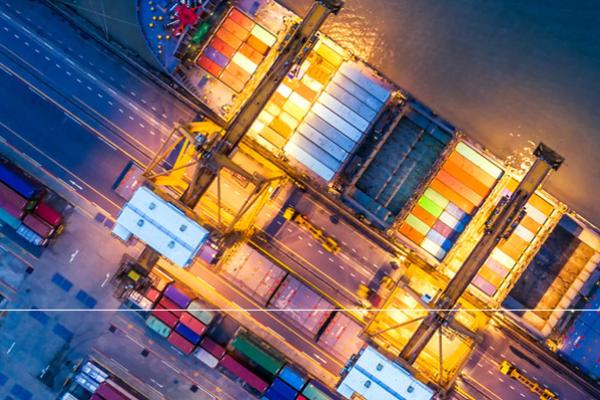Insights on Navigating Trump’s Tariffs
65 total results. Page 1 of 3.
International Trade & Investment Partner Megan Barnhill will speak at a CLE program presented by the Virginia State Bar on October 29, 2025.
Food, Drug, Medical Device & Cosmetic Partner Emily Cowley Leongini and International Trade & Investment Associate Mario Torrico will speak at SupplySide Global 2025.
Welcome to the October 2025 issue of “As the (Customs and Trade) World Turns,” our monthly newsletter where we compile essential updates from the customs and trade world over the past month. We bring you the most recent and significant insights in an accessible format, concluding with our main takeaways — aka “And the Fox Says…” — on what you need to know.
International Trade & Investment Partner and Energy & Cleantech Industry Co-Leader, Antonio Rivera will present on the evolving landscape of U.S.-China trade policy and its impact on the battery supply chain at The Battery Show Conference on October 8, 2025.
On September 15, US Customs and Border Protection (CBP) updated its guidance to implement President Trump’s September 4 Executive Order (EO) laying out terms of the US-Japan trade agreement and the phased reduction of selected US tariffs on Japanese goods.
Welcome to the September 2025 issue of “As the (Customs and Trade) World Turns,” our monthly newsletter where we compile essential updates from the customs and trade world over the past month. We bring you the most recent and significant insights in an accessible format, concluding with our main takeaways — aka “And the Fox Says…” — on what you need to know.
On July 22, President Trump announced that the United States and Japan had reached a bilateral trade agreement.
Welcome to the August 2025 issue of “As the (Customs and Trade) World Turns,” our monthly newsletter where we compile essential updates from the customs and trade world over the past month. We bring you the most recent and significant insights in an accessible format, concluding with our main takeaways — aka “And the Fox Says…” — on what you need to know.
After weeks of anticipation and a flurry of news from Washington, DC, the White House has issued a long-awaited executive order (EO) that resets the landscape for US reciprocal tariffs and related trade measures.
On July 31, 2025, ArentFox Schiff hosted the HGPII Annual Best Practices Forum, one of the group purchasing sector’s premier training and leadership development conferences.
In this episode of Five Questions, Five Answers, host Birgit Matthiesen welcomes AFS attorney James Kim to explore the current state of US tariffs and their impact on importers and various industries, with a special focus on the electric vehicle sector.
Join Mario Torrico for a webinar hosted by Stickybeak.
Join Antonio Rivera for a webinar hosted by the Brazilian-American Chamber of Commerce.
Welcome to the July 2025 issue of “As the (Customs and Trade) World Turns,” our monthly newsletter where we compile essential updates from the customs and trade world over the past month. We bring you the most recent and significant insights in an accessible format, concluding with our main takeaways — aka “And the Fox Says…” — on what you need to know.
Welcome to the June 2025 issue of “As the (Customs and Trade) World Turns,” our monthly newsletter where we compile essential updates from the customs and trade world over the past month. We bring you the most recent and significant insights in an accessible format, concluding with our main takeaways — aka “And the Fox Says…” — on what you need to know.
Partner Antonio Rivera was quoted on the federal court decision that President Trump exceeded his authority when he used the 1977 International Emergency Economic Powers Act (IEEPA) to impose worldwide tariffs by declaring a national emergency based on trade deficits.
They say, “timing is everything.” This podcast comes to our listeners as Washington, DC, contemplates next moves on the US tariff front, including new tariffs on products key to the e-mobility sector.

Welcome to the May 2025 issue of “As the (Customs and Trade) World Turns,” our monthly newsletter where we compile essential updates from the customs and trade world over the past month. We bring you the most recent and significant insights in an accessible format, concluding with our main takeaways — aka “And the Fox Says…” — on what you need to know.
On May 12, the United States and the People’s Republic of China announced a temporary 90-day agreement to roll back some of the reciprocal tariffs increases imposed in April.
Join Angela Santos at the American Apparel & Footwear Association 2025 Global Supply Chain & Trade Conference.
Join Joy Marie Virga on a panel at the Food Policy Impact 2025 conference.
Customs & Import Compliance Practice Leader Angela Santos was quoted on how importers are strategizing to lessen their liability under the Trump Administration’s tariffs.
On April 1, the US Secretary of Commerce initiated a section 232 “national security” investigation, “to determine the effects on national security of imports of semiconductors, semiconductor manufacturing equipment (SME), and their derivative products. This includes, among other things, semiconductor substrates and bare wafers, legacy chips, leading-edge chips, microelectronics, and SME components. Derivative products include downstream products that contain semiconductors, such as those that make up the electronics supply chain.”
Effective April 5, the United States imposed a 10% baseline tariff on imports from nearly all countries, excluding products from Canada and Mexico, and those products contained in the Harmonized Tariff Schedule of the United States Column 2 and the Annex II list attached to Executive Order 14257. In contrast, Chinese imports are subject an increased 125% reciprocal tariff rate, combined with 20% International Emergency Economic Powers Act duty rate in effect since March 4.
Join Antonio Rivera for a roundtable discussion at the Battery Show South.